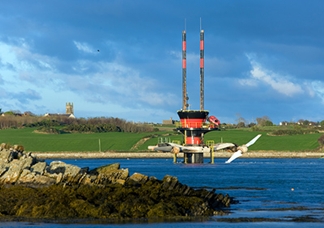 Siemens has acquired the majority stake in Marine Current Turbines Ltd., a UK company based in Bristol, which develops and builds tidal power systems.
Siemens has acquired the majority stake in Marine Current Turbines Ltd., a UK company based in Bristol, which develops and builds tidal power systems. “The acquisition of Marine Current Turbines is an important step forward for the Solar & Hydro Division,” said Ted Scheidegger, CEO of the Solar & Hydro Division of Siemens Energy. “We will continue to drive the commercialization of this promising technology which harvest energy from highly predictable tidal streams. Our target is to secure a leading position in this future business.”
In November 2011, Siemens increased its stake in the company to 45%. Now, Siemens intends to complete the acquisition of Marine Current Turbines in the coming few weeks.
Marine Current Turbines (MCT) has already successfully implemented a commercial-scale demonstration project with SeaGen in Strangford Lough in Northern Ireland. Since November 2008, two axial turbines with a combined capacity of 1.2MW have been providing power to approximately 1500 households. SeaGen has fed more than three gigawatt-hours of electricity into the grid to date. In terms of power generation this is currently the largest tidal current power project. Further projects are at the planning stage, including the 8-MW Kyle Rhea project in Scotland and the 10-MW Anglesey Skerries project in Wales. “Siemens’ acquisition is hugely welcomed by staff and management at MCT and signals great confidence in MCT’s achievements over many years,” said Andrew Tyler, CEO of MCT.
Tidal turbines generate electricity by utilizing tidal current flows. The SeaGen turbine is fixed on a structure and is driven by the flow of the tides. This technology is effectively similar to a wind turbine, with the rotor blades driven not by wind power but by tidal currents. Water has an energy density that is 800 times higher than that of wind. Twin rotors turn with the tidal current and optimally track the direction and speed of flow thanks to blades which can rotate through 180 degrees. A key advantage is that the generated power is precisely predictable in the tidal cycle.

